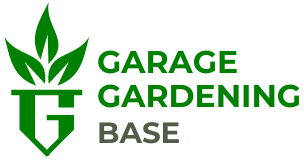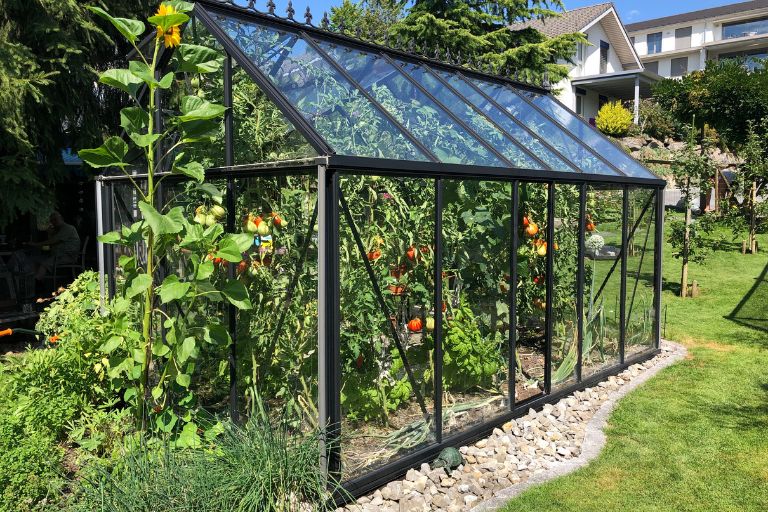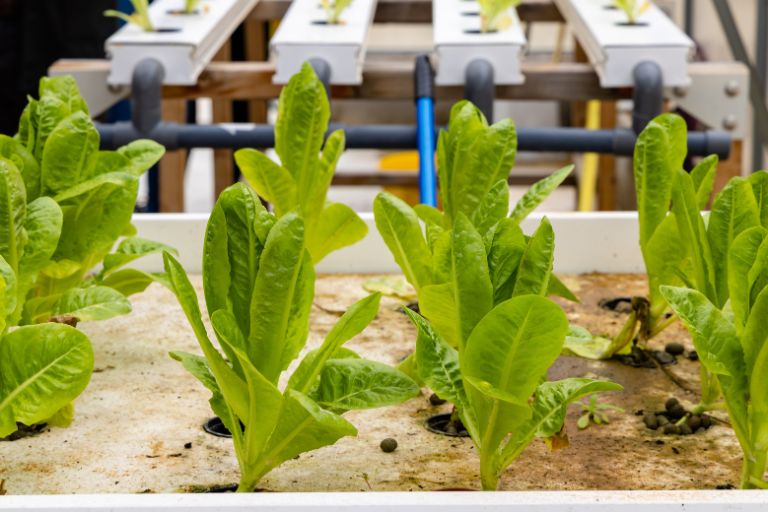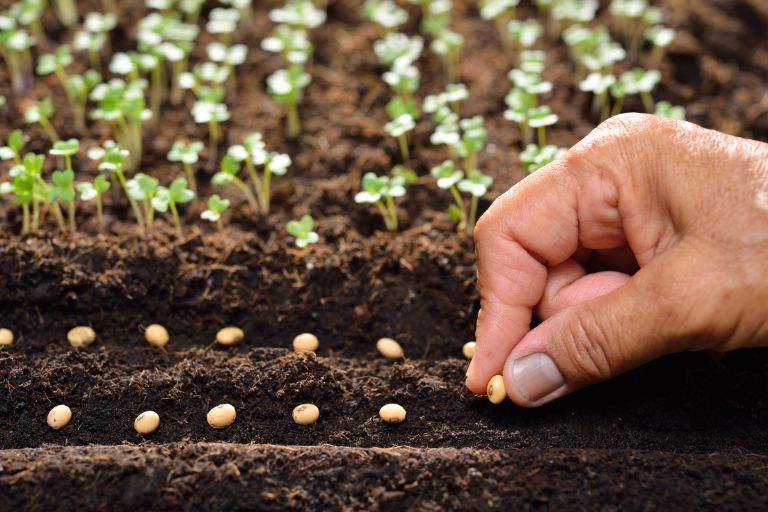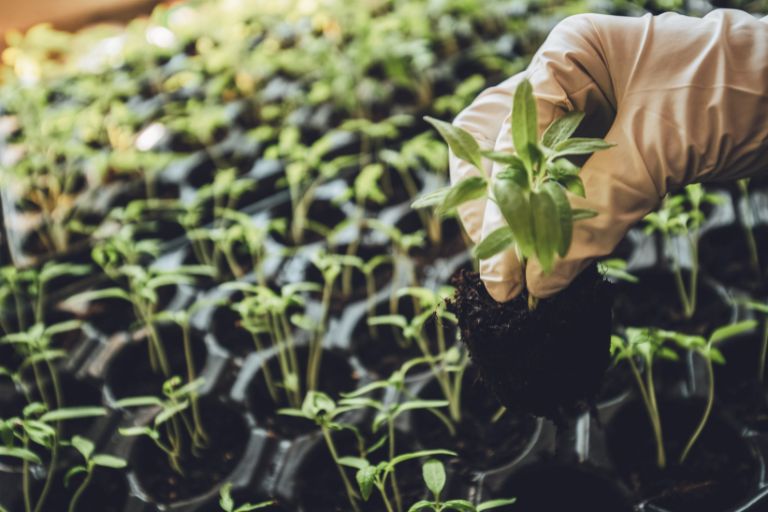Exploring Watering Systems for Garage Gardening: Efficiency, Sustainability, and Convenience
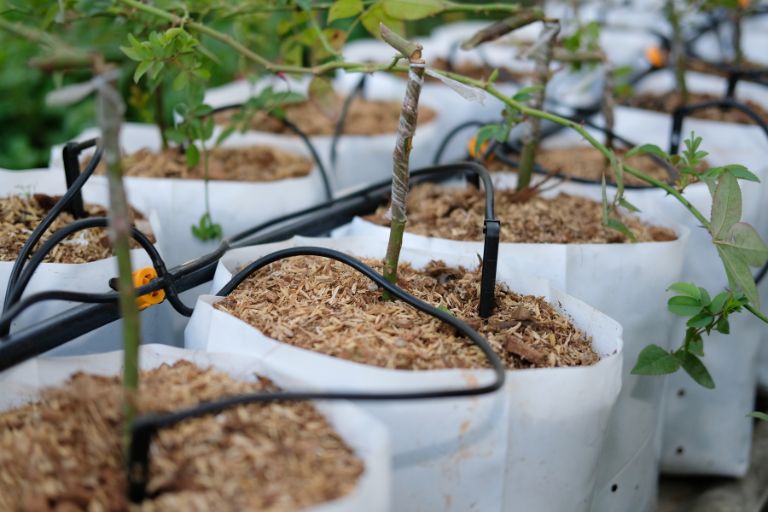
Garage gardening is a modern twist on traditional gardening that allows people with limited outdoor space to cultivate thriving greenery right in their own homes. By utilising unused or under-utilised indoor spaces such as garages, balconies or even spare rooms, gardeners can create miniature ecosystems that breathe life into their living spaces.
The benefits of garage gardening are many. Firstly, it provides a solution for urban dwellers or those without garden space, allowing them to connect with nature and enjoy the therapeutic benefits of gardening. Garage gardens also offer the opportunity to grow fresh herbs, vegetables or ornamental plants, promoting self-sufficiency and reducing dependence on store-bought produce.
However, garage gardening has its own unique challenges, particularly in terms of watering requirements. Unlike outdoor gardens that benefit from natural rainfall, garage gardens rely solely on manual watering or automated systems to deliver moisture to plants. Keeping plants adequately hydrated while managing limited space and potential water run-off can be a significant challenge for garage gardeners.
In this article, we’ll explore innovative irrigation solutions designed specifically for garage gardening that address these challenges and empower enthusiasts to create thriving indoor green spaces. So let’s dive in and discover how the right watering techniques can help your garage garden thrive!
Importance of Proper Watering
Water is the lifeblood of plants and ensuring that they are adequately hydrated is vital to their growth, development and overall health, especially in the confined environment of a garage garden. Here are a few of the reasons why getting watered right is so important:
Optimal growth – Just like people, plants need water to thrive. Adequate hydration facilitates essential biological processes such as photosynthesis, nutrient uptake and cell expansion, allowing plants to grow and flourish. Without sufficient water, plants can become stunted, wilted or fail to produce healthy foliage and flowers.
Nutrient transport – Water serves as a carrier for essential nutrients, transporting them from the soil to the plant’s roots and throughout its vascular system. Without proper hydration, plants may struggle to access vital nutrients, leading to deficiencies and poor growth.
Temperature regulation – Water plays a crucial role in regulating the temperature of plants, helping them to cope with fluctuations in environmental conditions. By absorbing heat during the day and releasing it at night, water helps plants maintain optimal temperature levels for metabolic processes.
Turgor pressure – Adequate water intake maintains turgor pressure within plant cells, keeping them firm and upright. When plants lack water, the cells lose turgor pressure, causing them to wilt and droop. Continued water deficiency can lead to irreversible damage and even death of plant tissues.
Resistance to stress – Well-hydrated plants are better able to withstand environmental stresses such as heat, drought and pest infestation. Water-stressed plants, on the other hand, are more susceptible to damage and may struggle to recover from adverse conditions.
Disease prevention – Proper irrigation practices promote plant vigour and resistance, reducing the risk of disease and fungal infection. Moisture-stressed plants are more susceptible to pathogens and less able to mount an effective defence against disease.
In the context of garage gardening, where plants are often grown in containers or limited soil volumes, maintaining consistent moisture levels is particularly critical. With limited access to natural rainfall and potential challenges such as soil compaction and drainage issues, garage gardeners must be vigilant in providing their plants with the water they need to thrive.
Manual Watering Methods
Traditional watering methods such as watering cans, jugs and spray bottles have long been staples in the gardening toolkit, offering simplicity and versatility to gardeners of all levels. Let’s take a closer look at some of these classic watering techniques and see how they stack up in the context of garage gardening:
Watering cans
Pros
Precision control – Watering cans allow precise watering, making it easy to target specific areas without soaking surrounding soil or foliage.
Easy to use – With a comfortable handle and spout, watering cans are user-friendly and suitable for gardeners of all ages and abilities.
Portability – Their compact size and lightweight design make watering cans easy to manoeuvre in tight spaces, making them ideal for garage gardening.
Cons
Limited capacity – Depending on size, watering cans can have a limited water holding capacity, requiring frequent refills for larger garage gardens.
Time-consuming – Watering plants one at a time with a watering can can be time consuming, especially for large gardens.
Risk of overwatering – Without proper care, it’s easy to accidentally overwater plants with a watering can, leading to waterlogged soil and root rot.
Pitcher
Pros
Versatility – Pitchers are versatile tools that can be used for watering plants, mixing fertiliser or displaying cut flowers in a garage garden.
Easy to fill – With a wide opening, pitchers are easy to fill from a water source, reducing spillage and mess.
Affordability – Pitchers are often inexpensive and readily available, making them a budget-friendly option for garage gardeners.
Cons
Lack of precision – Unlike watering cans, pitchers may not offer the same level of precision when watering plants, which can lead to uneven moisture distribution.
Limited reach – The short spout of pitchers can limit their reach, making it difficult to water plants in tight or elevated spaces.
Risk of breakage – Pitchers made from glass or ceramic materials are prone to breakage if mishandled or dropped, creating a safety hazard in the garage environment.
Spray bottles
Pros
Fine mist – Spray bottles deliver a gentle, fine mist of water, making them ideal for watering delicate seedlings, foliage or air plants in a garage garden.
Targeted application – With adjustable nozzles, sprayers allow targeted application of water, minimising waste and run-off.
Multi-purpose – Spray bottles can also be used to mist plants to increase humidity or apply foliar sprays and insecticides in a garage garden.
Cons
Limited capacity – Like watering cans, spray bottles have a limited water holding capacity, requiring frequent refills for larger garage gardens.
Labour intensive – Watering plants with a spray bottle can be labour-intensive, especially for large garden setups, and may not be suitable for those with mobility issues.
Not suitable for deep watering – Spray bottles are best for light watering or misting and may not be effective for the deep watering needs of certain plants or container sizes.
Traditional watering techniques such as watering cans, jugs and spray bottles offer simplicity and convenience to the garage gardener, but each has its own set of pros and cons. While these methods may be suitable for smaller garage gardens or individual plants, they may not be practical for larger or more extensive installations. Therefore, garage gardeners should weigh the benefits and limitations of traditional watering techniques and consider alternative watering solutions, such as automated irrigation systems or self-watering containers, to meet the varying needs of their indoor green spaces.
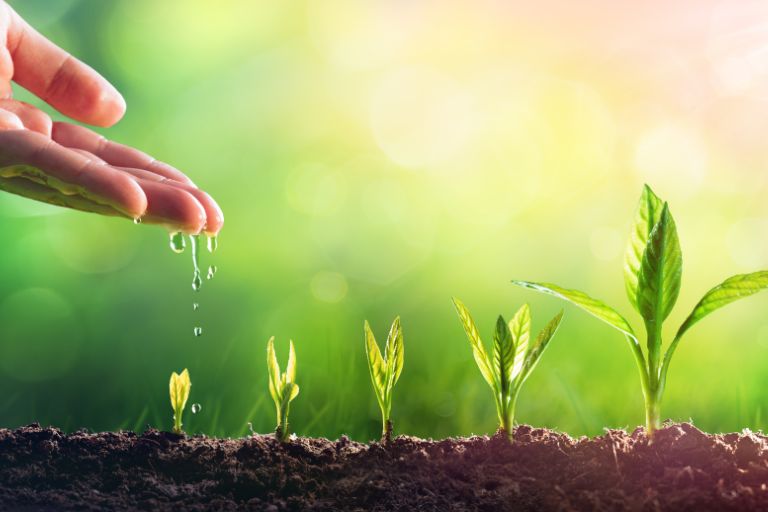
Automated Irrigation Systems
Automated watering systems offer a hands-free solution to the watering needs of garage gardens, providing consistent moisture to plants while minimising water waste and saving gardeners time. Here’s a closer look at three popular automatic irrigation systems suitable for garage gardening:
Drip Irrigation
How it works – Drip irrigation systems deliver water directly to the base of plants through a network of pipes or hoses fitted with emitters or drippers. The water is released slowly and evenly, ensuring that plants receive a consistent supply of moisture without wastage.
Benefits
Water conservation – Drip irrigation minimises water loss through evaporation or runoff by delivering water directly to the root zone, reducing water use compared to traditional irrigation methods.
Precision watering – Drip irrigation allows precise control of water distribution, ensuring that each plant receives the right amount of moisture based on its individual needs.
Convenience – Once installed, drip irrigation systems operate on a timer or automatic controller, eliminating the need for manual watering and providing gardeners with flexibility and convenience.
Soaker hoses
How they work – Soaker hoses are porous tubes that release water along their entire length, allowing the water to slowly seep into the soil. They are typically placed on the surface of the soil or buried just below the surface to deliver water directly to the root zone of plants.
Benefits
Efficient watering – Soaker hoses deliver water directly to the root zone, minimising water loss through evaporation or runoff and promoting efficient water use.
Uniform coverage – Soaker hoses provide even coverage along their length, ensuring that all plants receive an even supply of moisture without over or under watering.
Low maintenance – Soaker hoses are relatively low maintenance and easy to install, making them a convenient option for garage gardeners looking to automate their watering routine.
Self-watering containers
How it works – Self-watering containers have a reservoir or water tank below the soil level. A wicking mechanism, such as a wick or capillary mat, draws water from the reservoir into the soil, keeping it constantly moist.
Benefits
Water conservation – Self-watering containers reduce water waste by delivering water directly to the root zone as needed, minimising evaporation and run-off.
Consistent moisture – The self-regulating nature of self-watering containers ensures that plants receive a consistent supply of moisture, reducing the risk of over or under watering.
Reduced maintenance – Self-watering containers require less frequent watering and maintenance than traditional pots, making them an ideal option for busy gardeners or those with limited time to devote to plant care.
In terms of water conservation and convenience, all three automatic irrigation systems offer significant benefits for garage gardening. By delivering water directly to the root zone of plants and minimising water loss through evaporation or run-off, these systems help to conserve water while maintaining optimum moisture levels for plant growth and health. In addition, the automation provided by drip irrigation, soaker hoses and self-watering containers saves gardeners time and effort, allowing them to focus on other aspects of their garage garden with peace of mind.
Smart Watering Technologies
Smart irrigation solutions are revolutionising the way we care for our gardens, using technology to improve efficiency and convenience. These innovations include programmable timers, moisture sensors and smartphone-controlled irrigation systems, each offering unique benefits to the garage gardener.
Programmable timers
How they work – Programmable timers are devices that allow gardeners to schedule watering sessions at specific times and durations. They can be connected to irrigation systems or hosepipes and automate the watering process according to pre-set parameters.
Benefits
Precision timing – Programmable timers allow precise control of watering schedules, ensuring that plants receive water at optimal times for maximum uptake and efficiency.
Water conservation – By scheduling watering at off-peak times or when plants need it most, programmable timers help conserve water and minimise waste.
Convenience – Gardeners can set watering schedules according to their preferences and lifestyle, freeing up time for other tasks or activities.
Moisture Sensors
How they work – Moisture sensors are devices that measure soil moisture and trigger irrigation when the soil becomes too dry. They can be placed in the ground near plant roots or integrated into irrigation systems for real-time monitoring.
Benefits
Customised irrigation – Moisture sensors provide valuable data on soil moisture levels, allowing gardeners to adjust watering schedules based on plant needs and environmental conditions.
Water efficiency – By watering only when needed, moisture sensors help prevent overwatering and underwatering, promoting water conservation and reducing the risk of plant stress or root rot.
Remote monitoring – Some moisture sensors are equipped with wireless connectivity, allowing gardeners to monitor soil moisture levels remotely via smartphone apps or online platforms.
Smartphone controlled irrigation systems
How it works – Smartphone-controlled irrigation systems allow gardeners to remotely monitor and control watering schedules using a smartphone or tablet. These systems typically consist of a central hub or controller connected to irrigation valves, sensors and other components.
Benefits
Remote access – Smartphone-controlled irrigation systems allow gardeners to adjust watering schedules, monitor soil moisture levels, and receive alerts or notifications from anywhere with an internet connection.
Customisation – Smartphone apps allow easy customisation of watering schedules based on plant type, location and weather conditions, ensuring optimal care and efficiency.
Integration – Some smartphone-controlled irrigation systems are compatible with smart home platforms such as Alexa or Google Assistant, allowing seamless integration with other smart devices and automation routines.
Smart irrigation solutions such as programmable timers, moisture sensors and smartphone-controlled irrigation systems bring unparalleled convenience and efficiency to indoor gardening. Gardeners can easily automate watering tasks, optimise water use and ensure the health and vitality of their indoor green spaces by harnessing the power of technology. Whether you’re a tech enthusiast or simply looking for a smarter way to water your plants, smart watering solutions are sure to take your garage gardening experience to new heights.
DIY Watering Systems
Homemade drip irrigation system
Materials needed – Plastic bottles or containers, scissors or a drill, tubing or thin hoses, stakes or supports, and a water source.
Instructions – Cut or drill small holes in the bottom of plastic bottles. Connect tubes or hoses to the bottles, making sure they fit securely. Place the bottles near the base of the plants, using stakes or supports to keep them upright. Fill the bottles with water, adjusting the flow rate by changing the size or number of holes. The water will slowly drip out, providing a steady supply of moisture to the plants’ roots.
Repurpose gutters as self-watering containers
Materials needed – Old gutters or gutter sections, end caps, potting soil, plants and water.
Instructions – Cut the gutters into sections of the desired length, making sure they have end caps to hold the soil and water. Fill the gutters with potting soil and plant your chosen plants. Place the gutter containers at a slight slope or angle to allow excess water to drain away. Fill the bottom of the gutters with water and the capillary action will draw moisture up into the soil, creating a self-watering system.
Capillary mat self-watering system
Materials needed – Capillary mat or felt, containers or trays, water reservoir and plants.
Instructions – Cut the capillary mat to fit the bottom of the container or tray. Place the mat in the container, ensuring it extends into a water reservoir below. Fill the water reservoir with water to allow the capillary mat to absorb moisture. Plant your desired plants in the containers, ensuring that the bottoms of the pots are in contact with the capillary matting. The mat will absorb moisture into the soil, providing a continuous supply of water to the plants.
Wicking rope Self-watering containers
Materials needed – Cotton or nylon rope, containers or pots, water reservoir and plants.
Instructions – Cut the rope into lengths slightly longer than the height of the containers. Place one end of each rope in the water reservoir, making sure it is submerged. Plant the desired plants in the containers, ensuring that the other end of the rope is buried in the ground near the plant roots. The rope will draw moisture from the reservoir into the soil, providing a self-watering mechanism for the plants.
Recycled plastic bottles as self-watering planters
Materials needed – Plastic bottles or containers, sharp knife or scissors, potting soil and plants.
Instructions – Cut the plastic bottles in half horizontally, leaving the top with the cap intact. Fill the bottom half of the bottle with water and invert the top half (with the cap removed) into the water-filled base. Fill the inverted top half with potting soil and plant your chosen plants. The soil will absorb moisture from the water reservoir, providing a self-watering system for the plants.
Perfect for the garage gardener on a budget, these creative DIY watering solutions offer efficient and effective ways to keep plants hydrated without breaking the bank.
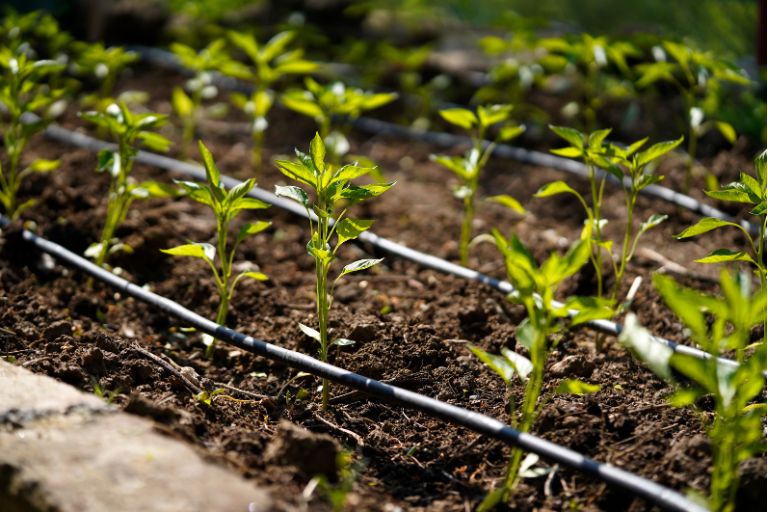
Considerations for Sustainability
Water conservation – Sustainable watering practices are essential for conserving water, a precious resource that is often in short supply, especially in urban areas. By using water-efficient systems such as drip irrigation or soaker hoses, garage gardeners can minimise water waste and ensure that every drop counts.
Rainwater harvesting – Rainwater harvesting is a sustainable practice that collects and stores rainwater for later use in watering plants. This not only reduces reliance on municipal water sources, but also helps prevent storm water runoff, which can contribute to soil erosion and water pollution. Garage gardeners can install rain barrels or cisterns to collect rainwater from gutters or downspouts, providing a free and abundant source of water for their indoor gardens.
Eco-friendly irrigation components – Choosing eco-friendly irrigation components, such as biodegradable pots, compostable mulch and non-toxic irrigation materials, is essential to minimising the environmental impact of garage gardening. By choosing sustainable alternatives, gardeners can reduce plastic waste and chemical runoff, creating a healthier and greener growing environment for their plants.
Reduced energy consumption – Many traditional watering systems, such as sprinklers or hose attachments, require energy to operate, contributing to greenhouse gas emissions and environmental degradation. Sustainable watering practices, such as using gravity-fed drip irrigation or hand-watering with a watering can, can help reduce energy consumption and promote a more sustainable approach to gardening.
Supporting biodiversity – Sustainable irrigation practices support biodiversity by creating habitats and food sources for native plants, insects and wildlife. By mimicking natural rainfall patterns and providing a consistent water supply, garage gardeners can attract beneficial pollinators and foster a diverse ecosystem in their indoor gardens.
Long-term sustainability – Adopting sustainable watering practices isn’t just about conserving water and reducing environmental impact; it’s also about ensuring the long-term sustainability of garage gardening as a whole. By prioritising eco-friendly practices and water-efficient systems, gardeners can create resilient and self-sustaining indoor gardens that will thrive for years to come.
Sustainable irrigation practices are crucial for garage gardeners who want to minimise their environmental footprint and create healthy, thriving indoor gardens. Contributing to a more sustainable and resilient future for indoor gardening, gardeners can conserve water, reduce energy consumption and promote biodiversity by implementing water-efficient systems, harvesting rainwater and using eco-friendly watering components.
Maintenance and Troubleshooting
Regular inspections – Schedule regular inspections of your irrigation system to check for leaks, blockages or other problems. Look for signs of wear and tear, such as cracked hoses or damaged connectors, and replace damaged components immediately.
Clean filters and emitters – Clean filters and emitters regularly to prevent clogging and ensure optimum water flow. Remove any debris or sediment that may accumulate over time and affect the performance of your irrigation system.
Adjust your watering schedule – Monitor weather conditions and adjust your watering schedule accordingly. During periods of heavy rainfall or high humidity, you may need to reduce watering frequency to avoid over-watering and waterlogged soil.
Mulch around plants – Apply a layer of mulch around plants to help retain moisture and reduce evaporation from the soil. This can help improve water efficiency and reduce the need for frequent watering.
Check for leaks – Inspect hoses, connectors and irrigation lines for signs of leakage or damage. Repair any leaks immediately to avoid wasting water and maintain the efficiency of your irrigation system.
Use proper watering techniques – Avoid watering plants during the hottest part of the day to minimise water loss through evaporation. Instead, water early in the morning or late in the evening when temperatures are cooler and soil moisture is less likely to evaporate quickly.
Monitor soil moisture – Use a moisture meter or simply test the soil with your finger to gauge moisture levels. Avoid overwatering by allowing the soil to dry out slightly between waterings, especially for container and raised bed plants.
Implement drainage solutions – Ensure proper drainage around plants to prevent waterlogging and soil compaction. Use raised beds, containers with drainage holes, or amend soil with organic matter to improve drainage and prevent water-related problems.
Consider drip irrigation – Drip irrigation systems are less prone to clogging than sprinklers or soaker hoses. However, it’s still important to check and clean drip emitters and filters regularly to maintain optimum performance.
Adjust water pressure – High water pressure can damage irrigation system components and cause leaks or bursts. Use a pressure regulator to maintain a consistent and appropriate water pressure for your system.
In this article, we’ve looked at different watering solutions tailored to garage gardening, recognising the importance of proper hydration for plant growth and health. We’ve looked at traditional watering techniques such as watering cans, pitchers and spray bottles, highlighting their advantages and disadvantages in the context of garage gardening. We’ve also looked at automated watering systems such as drip irrigation, soaker hoses and self-watering containers, highlighting their efficiency and convenience for the busy garage gardener.
We’ve also introduced smart watering solutions such as programmable timers, moisture sensors and smartphone-controlled irrigation systems, demonstrating their ability to increase efficiency and allow remote monitoring and control of watering schedules. Sustainable irrigation practices, including water-efficient systems, rainwater harvesting and eco-friendly components, were highlighted for their environmental benefits and long-term sustainability.
Finally, we’ve provided maintenance tips and troubleshooting advice to help gardeners optimise the performance of their irrigation systems and overcome common problems such as clogging, leaks and overwatering.
